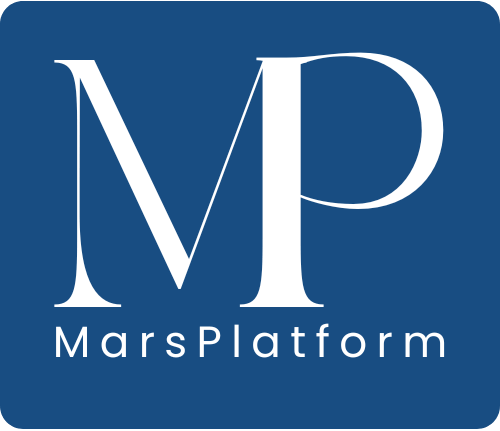Mastering LLM Prompt Engineering: A Developer’s Guide to Crafting Effective Interactions
In the swiftly evolving landscape of technology, the emergence of Large Language Models (LLMs) like GPT has opened up a new frontier for developers.
Thank you for reading this post, don't forget to subscribe!
The art of Prompt Engineering has become an indispensable skill in harnessing the full potential of these models. It’s more than merely communicating with an AI; it’s about crafting a dialogue that bridges human ingenuity with machine intelligence.
At the heart of this new discipline lies the understanding that the effectiveness of an LLM is significantly influenced by how we interact with it.
The journey of prompt engineering is not just about asking the right questions but framing them in a way that aligns with the AI’s logic and capabilities.
This nuanced approach can transform the interaction from a simple Q&A session into a deep, meaningful conversation, unlocking insights and solutions that were previously out of reach.
The evolution of Natural Language Processing (NLP) to the sophisticated stages of today’s LLMs like GPT-3.5 and GPT-4 marks a revolution in how we approach problem-solving and innovation.
Developers now have at their disposal tools such as the openai Python library, promptfoo, LangChain, and betterprompt, each offering unique advantages in fine-tuning the AI’s responses to our needs. Azure Prompt Flow introduces a visual interface that further simplifies the integration of LLMs into our workflows, making the technology more accessible than ever.
However, the journey of prompt engineering is not without its challenges. It requires a deep understanding of the model’s architecture, its strengths, and its limitations.
Developers must become adept at techniques like Few-shot Learning, Chain of Thought, and Perplexity to effectively communicate with the AI.
This journey is akin to learning a new language, one where precision, context, and creativity are key.
The guide “Mastering LLM Prompt Engineering” is not just a manual; it’s a compass for navigating the complex world of LLMs. It offers hands-on examples and practical insights that illuminate the path forward.
Through dedicated chapters on tools and techniques, developers are equipped with the knowledge to not only engage with LLMs but to elevate their interactions to new heights.
As we delve into this guide, we’re reminded of the power of effective communication.
A General Guide to Mastering LLM Prompt Engineering for Developers
The advent of Large Language Models (LLMs) has revolutionized the field of artificial intelligence, offering unprecedented capabilities in understanding and generating human-like text.
As developers, mastering the art of prompt engineering is crucial to leverage the full potential of LLMs for various applications.
This guide aims to provide a comprehensive overview of prompt engineering, covering its importance, fundamental concepts, and practical strategies for crafting effective prompts.
Introduction to Prompt Engineering
Prompt engineering is the process of designing inputs (prompts) for LLMs that guide the model to produce the desired output.
It’s a skill that combines linguistic creativity, technical understanding, and strategic thinking to communicate effectively with AI models.
Why Prompt Engineering Matters
Optimizing Interactions: Properly crafted prompts lead to more accurate, relevant, and concise responses from LLMs.
Enhancing AI Applications: Effective prompts can significantly improve the performance of AI-driven applications, from chatbots to content generation tools.
Unlocking LLM Capabilities: Advanced prompting techniques allow developers to tap into deeper functionalities of LLMs, such as reasoning, problem-solving, and creative content generation.
Understanding LLMs
Before diving into prompt engineering, it’s essential to understand the basics of LLMs, including their architecture, how they process information, and their limitations. This knowledge will inform how you craft your prompts.
Architecture and Capabilities: LLMs like GPT-3 and GPT-4 are trained on vast amounts of text data, enabling them to generate human-like text based on the input prompts they receive.
Limitations: Despite their capabilities, LLMs have limitations, such as biases in training data, lack of understanding of context beyond their training cut-off, and occasional generation of incorrect or nonsensical answers.
Best Practices in Prompt Engineering
1. Clarity and Specificity: Be clear and specific in your prompts. Vague prompts often lead to vague responses, while specific prompts can guide the model to generate more precise and useful outputs.
2. Contextual Information: Provide sufficient context within your prompts. This helps the model understand the query better and generate responses that are relevant and accurate.
3. Iterative Refinement: Prompt engineering is an iterative process. Test your prompts, analyze the responses, and refine your approach based on feedback.
4. Creative Techniques: Experiment with different prompting techniques such as few-shot learning, where you provide examples of the input-output pairs you expect, and chain of thought prompting, which guides the model through a step-by-step reasoning process.
Tools and Resources for Prompt Engineering
OpenAI’s Python Library: Use this library to interact directly with OpenAI’s LLMs, offering functionalities for prompt crafting, response analysis, and fine-tuning.
PromptFoo and BetterPrompt: These tools help test and optimize your prompts, providing insights into how different prompt structures affect the model’s responses.
LangChain: A framework for building LLM-powered applications, offering utilities for prompt testing and deployment.
Azure Prompt Flow: A visual tool for designing and integrating LLM-based workflows, facilitating the combination of prompts and Python scripts.
Hands-on Practice
The best way to master prompt engineering is through practice. Engage with the tools mentioned above, experiment with various prompt strategies, and observe how changes in your prompt design affect the LLM’s outputs.
Practical exercises and real-world projects will deepen your understanding and skill in prompt engineering.
Prompt engineering is a dynamic and essential skill for developers working with LLMs.
By understanding the principles of effective prompt design and leveraging the right tools, you can enhance the capabilities of your AI applications, unlocking new possibilities for innovation and problem-solving.
As you embark on your prompt engineering journey, remember that creativity, experimentation, and continuous learning are your best tools for success.
“Keep enhancing your AI knowledge and stay ahead with the latest prompting techniques by exploring Mars AI, your go-to “100 Mars AI Tasks” for continuous learning and innovation in content creation.”



